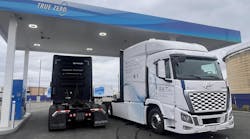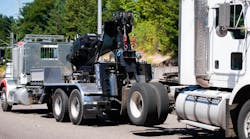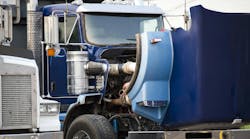In some ways, Steven Matsil's appointment to chief engineer for General Motors' medium-duty truck group is a study in fortunate coincidence. For starters, Matsil spent nearly a decade working at GM's proving grounds, learning how to put the best designs and materials to the ultimate tests — turning brand new motor homes and trucks into scrap in an effort to find out how they would hold up in the real world.
Then there's his original field of engineering study — aviation. Aspects of aviation engineering, especially when it comes to electronic systems, are being steadily incorporated into trucks. And Matsil thinks this will make truck design and development a more complicated and interesting profession in the years ahead.
“We're starting to see aircraft-level hardware migrating into trucks,” he says. “The issue revolves around the more complicated electronics involved not only with engines, but in two-way communication systems that collect and relay data back to the dispatch center. In the future, we're looking at telematic systems that will relay route information to drivers and communicate the status of vehicle components for preventive maintenance purposes.”
The issue with such complicated electronics, says Matsil, is “hardening” them for the far tougher world of medium-duty trucks. “You don't see salt being used on airport runways; trucks are exposed to salt for months at a time on the highways,” he explains. “In the truck environment, electronics need to be temperature-resistant, vibration-resistant, and consistently reliable over the life cycle of the truck. That's our challenge.”
GM recently unveiled its latest medium-duty product, code-named the GMT 560, to replace its venerable line of C-series vehicles. Scheduled for production starting in January 2002, GM considers these trucks to be 2003 models. GVWRs will range from 16,000 to 61,000 lb., making the vehicles available to the lower-end Class 8 market. The crew cab configuration will be available in 2002, followed by a 4WD model.
Vehicle safety in the form of driver control and comfort were huge considerations in the GMT 560 design process, says Matsil. GM conducted extensive surveys and interviews with commercial and municipal fleets, as well as owner-operators.
“These owners and users of medium-duty trucks stressed the driver control and comfort requirements,” he says. “The fleets and owner-operators we surveyed wanted improved forward visibility, tighter turning circle maneuverability, responsive steering control and confident, predictable brake system performance. They also wanted to make pre-trip inspections easier, so drivers could quickly check all the fluid levels before starting out. Daily safety inspections are required on all CDL-level commercial vehicles to ensure that they're road worthy.”
Life cycle cost on a per mile basis, of course, also remains a key concern, as fleets try to find ways to incorporate safety measures cost-effectively. “There's a real increased focus on safety — especially on driver control and comfort, which goes hand and glove with safety. Responsive steering and brakes, comfortable seating, instruments that are easy to read, and accessible switches and controls all promote safer driving,” says Matsil. “But the age-old argument of cost versus benefit remains. The truck market we're in remains very price-sensitive, so the costs of high-tech systems such as back-up and near-obstacle detection, or infrared night vision systems, must be offset,” he continues. “Do the costs of these systems, including maintenance, offset the cost of the vehicle or property incidents incurred? That's where the fleet must make its business decision.”
Each month this column looks at emerging truck technology issues through the eyes of a leading engineer.


